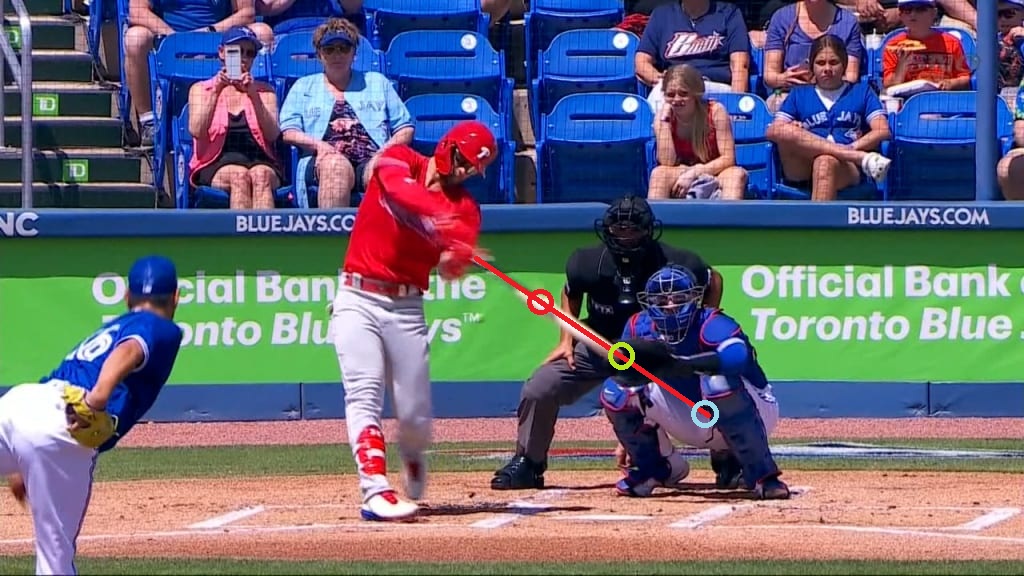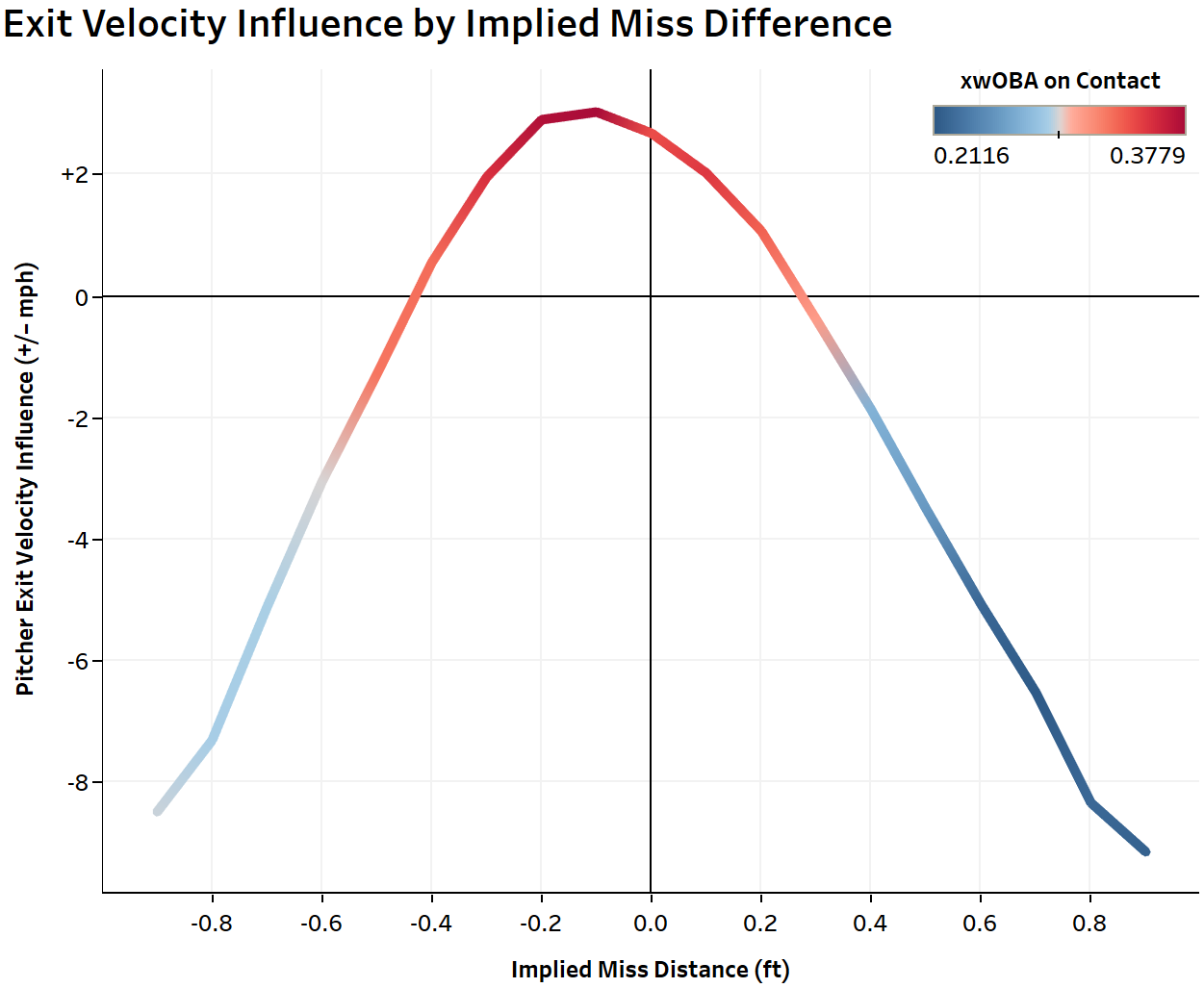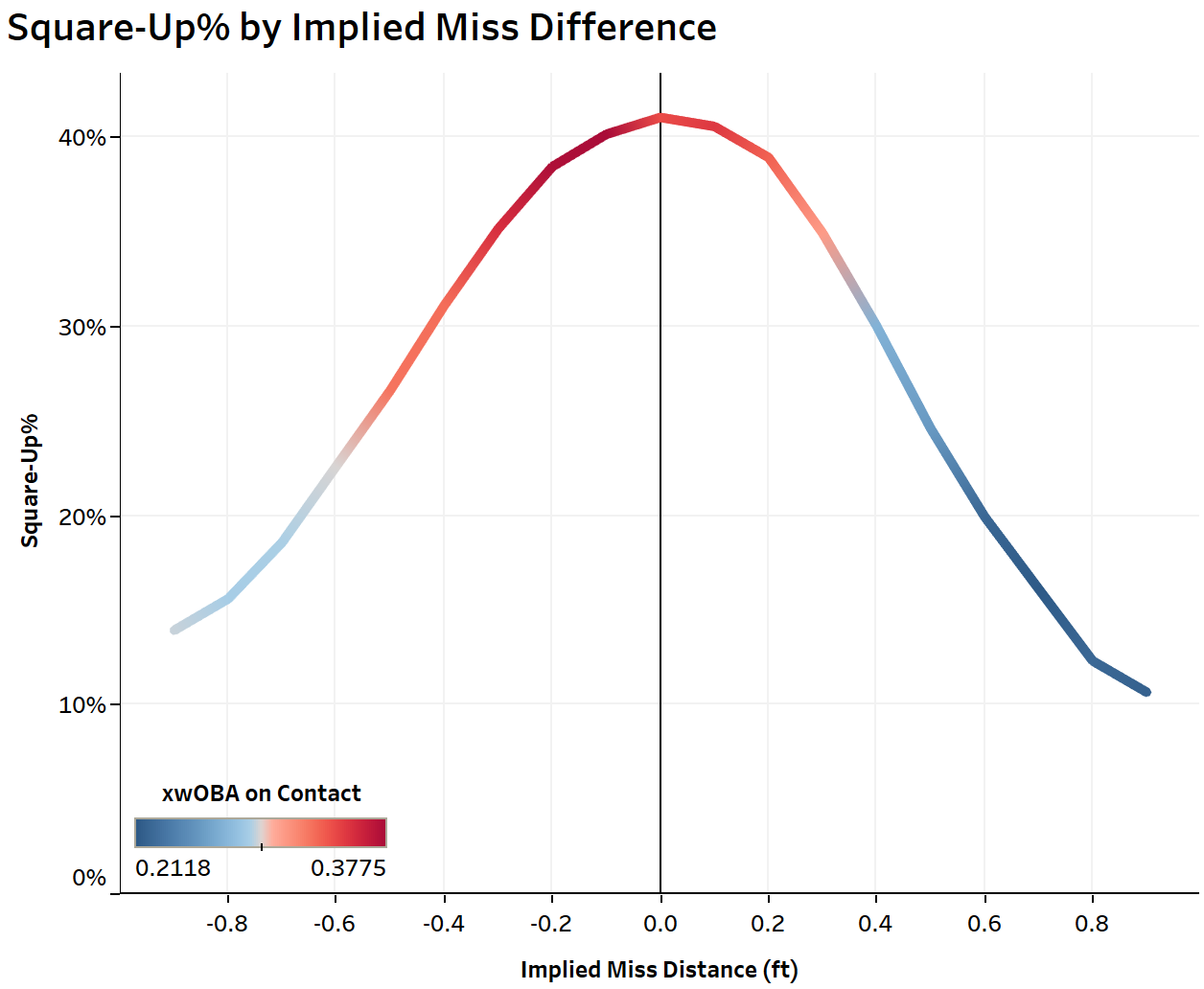
Few issues tickle my fancy like a baseball participant as much as no good. Blue Jays reliever Brendon Little presently holds this distinction. Take a gander:
That’s Ramón Laureano swinging at Little’s knuckle-curve, which Little bounced off the entrance fringe of dwelling plate. Right here’s one other (pardon Matt Olson’s cameo):
That’s Sean Murphy shortly resigning himself to failure towards one other curve within the grime, this one picked by Alejandro Kirk. Yet another for the experience dwelling:
That’s Junior Caminero emulating a mangled corkscrew towards one more bouncing curve, one thing for which Little ought to contemplate getting a patent.
As Ryley Delaney famous at Blue Jays Nation a few weeks in the past, the pitch is a superlative providing. It generated 30 whiffs in Might, tied for many by any pitch thrown by a reliever. It has allowed the bottom contact charge on the season (min. 200 thrown), fueling Little’s ascent up the swinging strike leaderboard, the place he stands tall with the majors’ fourth-highest swinging strike charge (min. 20 innings). The pitch additionally boasts each the lowest zone charge (Zone%) and highest charge of waste of any particular person providing. Lastly — and I’ve to say I like this about him and for him — Little throws the pitch 83% of the time in two-strike counts. Eighty-three p.c. 5 instances out of six! (All stats are as of June 8.)
Opposing hitters ought to know what they’re getting from Little once they’re down two strikes. It’s going to be a knuckle-curve, as a result of the pitch is silly good, if not haunted. It’s not going to be within the strike zone, as a result of it doesn’t must be. The hitter will swing anyway, usually within the type of a noncommittal oooooops swing, as a result of there’s two strikes and naturally he’s swinging. It’s all scripted upfront; even when the ebook had been out on Little, which it needs to be, it wouldn’t actually matter. This, in spite of everything, is a person who is aware of it’s completely superb to make use of the identical trusty hammer each time he’s introduced with a nail. It is a man who needn’t heed recreation principle and its intricacies as a result of he supersedes it. It is a man engaged in shenanigans. It is a man as much as no good.
What in regards to the pitch has made it so efficient? I’ve lengthy been a proponent of the concept that pitches don’t should be conventionally “good” to achieve success. They will merely be distinctive, unfamiliar. Little’s knuckle-curve definitely falls below this latter classification. Its solely fairly shut comp is Kyle Freeland’s curve — by way of whole induced vertical and horizontal motion, they’re fairly related — however Little throws his curve 4 ticks tougher with 500 fewer revolutions per minute from the next arm slot. The result’s a pitch that appears a lot firmer out of hand, presumably strike zone-bound, just for the underside to fall out, leaving the opposing hitter to replicate on all the choices he made in his life that introduced him to the completely ghastly hack he simply took at a wobbly curve that didn’t attain dwelling plate.
…
Statcast’s new bat monitoring knowledge are as thrilling as they’re plentiful. The obvious use case for these new measurements is the higher analysis of hitters. However I used to be extra instantly compelled by what these knowledge can inform us in regards to the participant on the opposite aspect of the ball (i.e., the pitcher), and I wasn’t alone. Whereas extra apparent functions embody offering higher context for present outcomes like exit velocity, launch angle, and spray angle, Stephen Sutton-Brown, keeper of and mastermind behind Baseball Prospectus’ StuffPro metrics and associated pitch modeling efforts, shortly recognized a really intelligent use of swing path tilt:
Swing tilt relative to a batter’s common tilt on middle-middle four-seams tells you the place they anticipated a pitch to cross the plate ==> modeling anticipated plate location given relative swing tilt provides us a technique to validate anticipated pitch possibilities
— Stephen Sutton-Brown (@srbrown70.bsky.social) 2025-05-21T02:00:34.952Z
Sutton-Brown’s sabermetric pursuits and achievements routinely clock in above my pay grade. I don’t know the way to mannequin anticipated pitch possibilities! However I used to be instantly struck by his ingenuity, particularly the premise of estimating the hitter’s anticipated pitch location primarily based on the noticed tilt of his swing. Taking it a step additional, I believe we will assume a hitter sometimes reveals mechanical continuity from pitch to pitch. As such, his swing path ought to function constant tilt at any given pitch location. This assumption permits us to make use of swing path tilt towards any pitch to “reverse-engineer” the hitter’s expectation of the pitch’s location. Compute the distinction between the anticipated and precise places, and also you’re left with what I’ll name the implied miss distance, or IMD.
It’s an imperfect principle. For one factor, the idea that hitters are mechanically constant from swing to swing might be principally appropriate, however not at all times. Not all swings are good swings (as evidenced above), and even among the good swings are completely different from the opposite good swings. For now, this assumption is what it’s. These inconsistencies have an effect on each hitter, so a minimum of the inconsistencies are constant.
And let’s contemplate a nonetheless picture of a swing the place the bat is proven flush with dwelling plate, having both simply linked with or swung previous a pitch. When you draw a line from the knob out by the top of the bat like a lightsaber, the swing path tilt intersects an array of places with extremely diverse vertical and horizontal coordinates. Let’s use Bryce Harper for example:

The purple, inexperienced, and blue circles would all be legitimate pitch places primarily based on Harper’s swing path tilt. I’m not competent sufficient to find out, statistically, whether or not Harper anticipated that pitch to be up on his fingers or down and away, each of which lie alongside the swing path tilt conveyed by his lightsaber. To bypass this, I calculated a hitter’s common swing path tilt primarily based solely on pitch top. IMD then turns into an estimation, with appreciable error bars, of the common implied miss distance alongside the vertical aircraft (i.e., with respect to a pitch’s top). By lowering this situation from two dimensions to at least one, we simplify the query: “How far over or below the pitch did the hitter swing?”
Which brings us to the actual motive we’re gathered right here as we speak: Little’s knuckle-curve, along with all its different honors and recognitions, boasts the most important common IMD (in absolute phrases) of any pitch thrown a minimum of 200 instances this yr. It’s the one pitch with an implied miss distance larger than eight inches on common, not to mention 9. And this isn’t simply on whiffs! Hitters miss his knuckle-curve by a median of three-quarters of a foot on each swing. They only swing proper excessive of that sucker:
2025 Implied Miss Distance Leaders/Laggards
Knowledge present as of June 1
Min. 200 pitches thrown
(Two different fast issues. First, this isn’t a Kodai Senga put up, however Senga having three pitches featured right here — two leaders and one laggard — is fascinating. Additionally, as a result of IMD relies upon vertical motion, we will see its bias towards pitches with vertical motion traits in comparison with these with lateral motion traits. Whiffs do are inclined to favor vertical motion, nonetheless, so this bias will not be unfounded. Anyway.)
The magnitude and course of a pitch’s IMD can inform us loads about its effectiveness. For instance, pitches with bigger constructive IMDs (which means misses excessive of the pitch) induce shallower launch angles and extra groundballs, whereas pitches with bigger destructive IMDs (below the pitch) induce steeper launch angles and extra popups. (“Launch angle affect” beneath controls for pitch top and opposing hitters’ particular person tendencies.) The road doesn’t go completely by the origin, but it surely’s fairly shut, and it might be gently affected by survivorship bias:

Absolutely the magnitude of the IMD additionally correlates with decrease exit velocities. (“Exit velocity affect” controls for pitch velocity and opposing hitters’ particular person tendencies.) It’s handy to my principle and my fragile ego that, like launch angle affect above, hitters certainly maximize their exit velocities towards pitches the place the implied miss distance is successfully zero…

…as a result of if the IMD is zero, the hitter has extra seemingly than not squared up that pitch:

From the color-coding in every graph, you’ll be able to see from just about each vantage level how anticipated contact high quality (vis-à-vis weighted on-base common on contact, a.okay.a. xwOBAcon) is maximized the place IMD is minimized, and the way pitchers’ skills to exert their affect over outputs — by suppressing exit velocities, by skewing launch angles, by stopping flush contact — will be externally validated. Little’s knuckle-curve numbers: -2.1 mph exit velocity affect, -10.4 levels launch angle affect, 13.3% squared-up% (league common is 31%), .171 xwOBAcon (in comparison with .347 precise wOBAcon). All of it tracks.
Thus, I see IMD nearly as a measure of a pitch’s swing (and miss) high quality. It not solely helps corroborate one thing like swinging strike charge but additionally lends veracity to a pitcher’s contact administration abilities and the diploma to which they manifest. Pitch location by itself already goes a great distance towards explaining these; pairing location with IMD provides much more readability. IMD seemingly wants additional stress-testing — for instance, swing path tilt doesn’t enhance linearly with pitch top, so IMD could also be overstated for pitches with low targets (like changeups or Little’s knuckle-curve) in comparison with pitches with excessive targets, like four-seamers — however this rudimentary model appears sufficiently illuminating to me.
On the finish of the day, IMD is only a descriptive metric. It tells us what occurs (or a minimum of provides us its personal model of the story about what occurred), and it might have some predictive worth to it, but it surely doesn’t clarify why Little’s knuckle-curve is so good, why it elicits such woeful swings, simply that it does. That, I believe, is a job for Sutton-Brown and like-minded nerds (complimentary) whose work already relentlessly pursues these solutions by capital-‘s’ Stuff modeling, arsenal interplay results by form mimicry, tunneling, and sequencing, and so forth. These matters can invariably present an evidence for Little’s dominance. (Talking of which, Stuff+ loves the pitch in query.)
Nonetheless, so far as descriptive metrics go, this one appears fairly nifty, particularly if it validates my Little king, for whom I’ve shortly developed a terrific fondness. Little’s knuckle-curve makes hitters appear to be absolute buffoons, and IMD confirms this. (The clips at first of this put up? I selected them by wanting up the three largest IMDs elicited by Little’s knuckle-curve. They didn’t disappoint.) He spams the pitch relentlessly in two-strike counts; that it’s nearly by no means positioned competitively by the point it reaches dwelling plate provides insult to harm. He can’t hold getting away with it. IMD suggests he most likely will.
